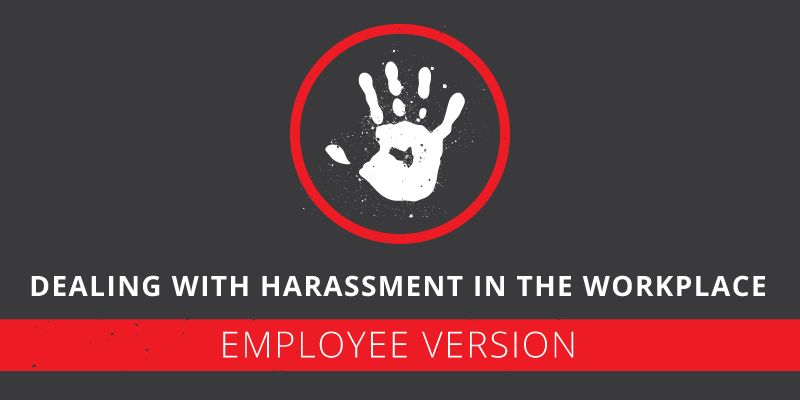By Daniela Ibarra

This is part three of our Harassment in the Workplace series, in which we explore employees’ responsibilities for dealing with workplace harassment complaints. If you haven’t yet, check out the HR version here and the Supervisor version here.
Why do we invest time learning about sexual harassment in our workplace?
Well, legally, sexual harassment is against the law. It’s a violation of Title Seven of the Civil Rights Act of 1964, which prohibits discrimination on the basis of sex. Over the years, court cases and EEOC rulings have established that harassment occurs when there are “unwelcome sexual advances, requests for sexual favors, or other verbal or physical harassment of a sexual nature.”
It’s also sexual harassment when behavior is so frequent or severe that it creates a “hostile or offensive work environment, or when it results in an adverse employment decision.” This can include offensive remarks about a person’s sex, or offensive comments about women or men in general.
Organizationally, sexual harassment is a direct violation of the organization’s values. It’s morale-sapping, productivity-draining, chasing-off-good-people behavior that destroys the opportunity for performance excellence. It adds no value to employees or customers, and generates unnecessary expenses.
The only policy for sexual harassment should be a zero-tolerance policy. It has no place in the workplace. Unfortunately, that’s not always the case.
Harassment is a continuing and growing problem in the workplace
Why are organizations still making such a big deal out of sexual harassment? Back in the 1980’s, when the first studies were done, employees reported a high prevalence of harassment. Depending on the study, anywhere from 42 to 88 percent of employees admitted being sexually harassed. And 15 percent of males in the U.S. Merit Systems Protection Board Study said they’d been harassed.
So with all the court rulings, policy statements, bulletin board postings, employee manuals, and annual sexual harassment training, the problem must have gone away, right? Unfortunately, no it has not.
More recently, an ABC News—Washington Post poll found that 24 percent of women, and 10 percent of men, report having been sexually harassed on the job. So the overall numbers are lower than in previous decades, but sexual harassment is still an all-too-common experience at work.
And, for women who’ve been harassed, the poll found that only 41 percent have reported it to their employer! This means that organizations are hearing about only a portion of the harassment that’s going on.
Why is harassment happening at all? A lot of experts point to today’s culture. Learn more about how to identify and deal with harassment in the workplace with our free on-demand webinar. Click here to register.
Daniela Ibarra researches and writes on a variety of business topics, including workplace dynamics, HR strategies, and training trends and technology.

